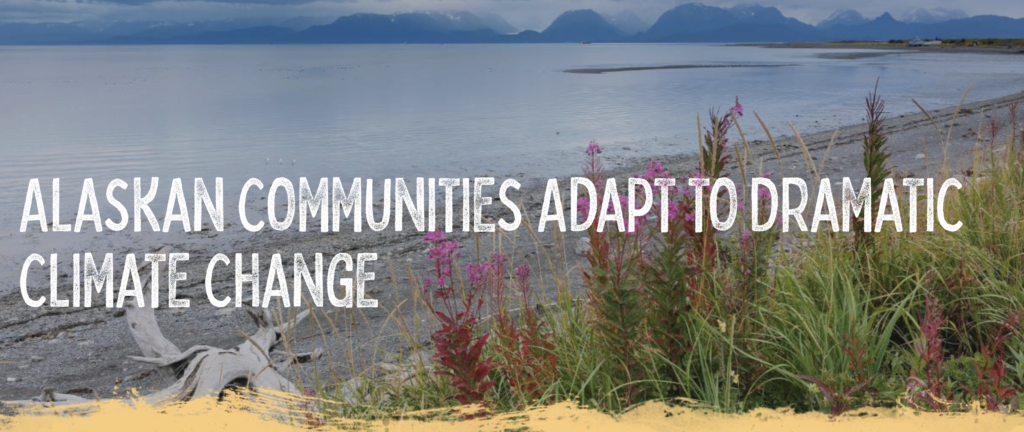Posted to AAAS September 16, 2019

EROSION AND RELOCATION
Alaska is facing some of the most imminent threats from climate change in the United States, with fast-rising temperatures, thawing permafrost and massive storms.
The small Inuit village of Napakiak is under immediate threat of flooding from the rising Kuskokwim River, and community leaders are consulting with engineers and scientists to determine how and where to move. Homer, a fishing and tourist center of more than 5,000, adopted one of the state’s first climate action plans and is continuing to try to adapt to a world with more dangerous storms and threatened fisheries.
Each spring and fall, Napakiak City Council member and Alaska Native Walter Nelson watches the Kuskokwim River move closer to his town.
A warming climate has altered the flow of Alaskan rivers, as ice melt speeds up and they are not frozen as long as they once were. Violent storms, also fueled by a warming climate, add to the changing characteristics of the Kuskokwim River as it flows by the tiny Alaskan village of Napakiak before emptying into the Bering Sea. Every year, a rising torrent chews out bigger swaths of riverbank, encroaching upon this small community of about 360 people, mostly of Inuit descent, driving the town into what experts call a “managed retreat.”
In 2019, strong spring storms took out the town boat landing, threatening the only school in town and forcing the community to move its city garage and fire station further away from the river. The town cemetery has already been flooded and relocated, Nelson says, and residents are now investing in metal caskets so they can be moved more easily in the future.
“Every year we have to move some buildings,” Nelson says. “The erosion rate is accelerating, and the funding is hard to get to do anything about it. But we can’t just let the buildings fall into the river.”
Click below for full article